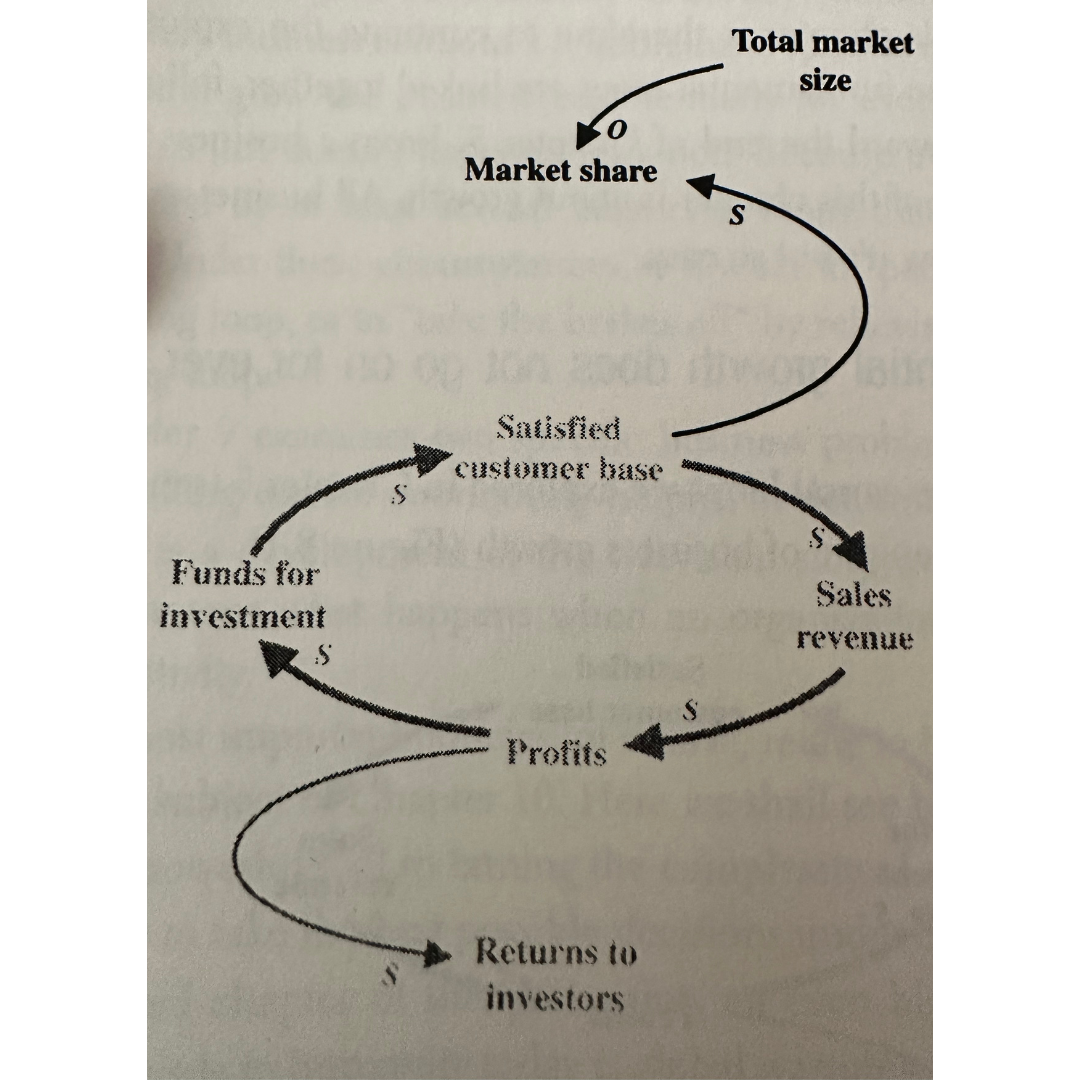Leverage Systems Thinking Books to Improve Journey Mapping Skills
Booklist emphasizing systems thinking for UX and CX professionals.

Systems thinking is a highly desired skill for tech industry professionals. It is widely understood that businesses operate in systems. So the thinking goes, if you are a systems thinker, you should be able to work on a business problem in a structured, systematic, and methodical manner. As a result, you will create valuable solutions to gnarly business problems.
Systems Thinkers Traits
- Think scalability (Minimize future technical and customer debt)
- Account for the relationships between objects (You can close loops)
- Differentiate between a system and a subsystem (How much surface area is affected by a problem?)
- Focus on patterns (A pattern is comprised of components)
- See loops (Not linear thinker, meaning you don't view problems in a straight line or A + B)
System Thinking Creates Realistic Journey Maps
I love systems thinking because it helps me build journey maps faster and more accurately.
This book list is oriented toward the practical application of systems thinking. I look for books where I can take a concept and immediately apply it to a process at work.

The Systems Bible: The Beginner's Guide to Systems Large and Small

Probably the most referenced systems thinking book on my shelf. It's easy to read and has a lot of practical tips and methods of understanding systems. It drives home basic systems thinking concepts. Some of the text is humorous because it surfaces many problems corporations struggle with. It gives you a new way to think about those problems.
One of my favorite quotes in the book is the following:
As systems grow in size and complexity, they tend to lose basic functions.
Growing Wings on The Way: Systems Thinking For Messy Situations

A thoughtful systems thinking book that requires you to sit down and read several pages of a chapter at a time. But what I like about this book is that it spends much time working through how to structure problems. Learning how to structure problems is key to being an effective systems thinker.
One of my favorite quotes in this book is the following:
A name is a label, and as soon as there is a label, the ideas disappeared and out comes label-worship and label-bashing, and instead of living by a theme of ideas, people begin dying for labels...
Richard Bach (b. 1936)
The Fifth Discipline

I've read the fifth discipline, but it wasn't what I needed. I read it primarily out of obligation because this book was mentioned on several systems thinking book lists. But this is a good book that should sit on your shelf if you are managing teams. It just didn't have the information presented in a way that I could quickly consult. When I encounter old books that were the gold standard back in the day, I buy them secondhand and put them on my bookshelf, where I consult them from time to time or just read a chapter that I find interesting.
One of my favorite quotes in this book is the following:
Our non-systemic ways of thinking consistently lead us to focus on low-leverage changes.

The Logical Thinking Process: A Systems Approach to Complex Problem Solving

This book will knock you back and make your brain go fuzzy. It's a textbook that requires some serious intellectual horsepower to master. There are two topics that I studied over and over. The first one is "the concept of system constraints," and the second topic is the concept of the "current reality tree." I cannot tell you how important this book is if you are serious about mastering significant complex system problems you encounter at your company.
One of my favorite quotes in this book is the following:
Systems are analogous. Each system has a "weakest link" (constraint) that ultimately limits the success of the entire system.
Seeing the Forrest for the Trees: A Managers Guide to Applying Systems Thinking

I like this book because it has a ton of casual loop diagrams as examples throughout the book. It also has a lot of business loops, which is very helpful when you want to understand the systems aspect of all the different business processes that take place in a company. I use the concepts of loops when assessing the customer tasks within a customer experience because I can quickly figure out what tasks are essential.
Here is an example of a casual loop diagram:

One of my favorite quotes in this book is the following:
Even in a very sophisticated organization, no one was looking at the whole picture. Each manager was being very conscientious in managing their "bit" but the succesful management of all the bits was suboptimizing the management of the whole. This of course, is a natural consequence of most organizational structures and the power of local perfomance measures.

Systems Thinking: Managing Chaos and Complexity

This book combines system dynamics and systems design. This is a heavy book. You will end up reading a portion and then reread it. It's primarily geared toward senior leaders and consultants.
One of my favorite quotes in this book is the following:
Finally, design thinking is the ability to differentiate and integrate at the same time. Design is the most effective tool of integration: to design is to create an integrated whole from differentiated parts.
Thinking in Systems: A Primer

Ok, I see this book appear on many design book lists. I like this book but wouldn't start with this book as an intro to systems thinking. It does a good job of explaining systems in a way that is relatable to the reader. However, this book is not something I would consult regularly.
One of my favorite quotes in this book is the following:
Everything we think we know about the world is a model. Our models do a strong congruence with the world. Our models fall far short of representing the real world fully.
Complexity: A Guided Tour

I do not recommend this book to UX designers. Not applicable.
The Quark and the Jaguar: Adventures in the Simple and the Complex

I do not recommend this book to UX designers. Not applicable.
Industrial Dynamics

A classic within the system dynamics literature. This book was initially published in 1963. System dynamics is a subset of systems thinking. System dynamics uses feedback loops and time delays to study and manage complex feedback systems. I don't recommend purchasing unless you need a deep dive into systems dynamics.
One of my favorite quotes in this book is the following:
Information-Feedback Control Theory
Information-feedback systems, whether they be mechanical, biological, or social, owe their behavior to three characteristics – structure, delays, and amplification.
Written by Leo Vroegindewey, B2B CX Consultant
Get in touch to improve your customer experience and increase sales. Let's talk about how I can help your business grow. Email me.